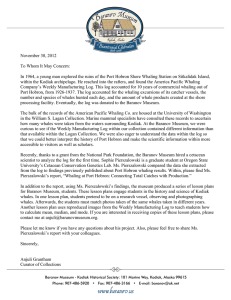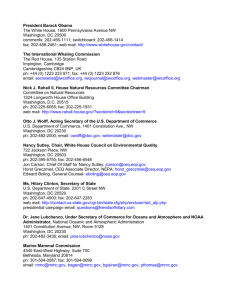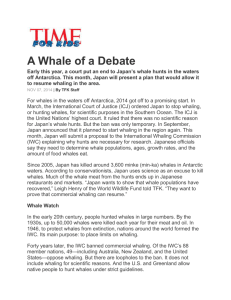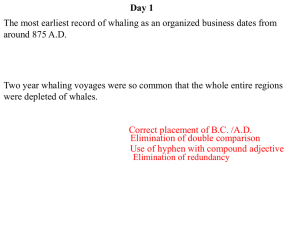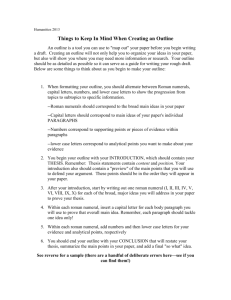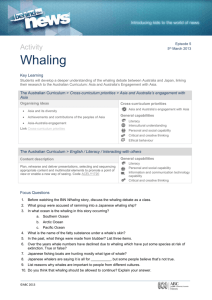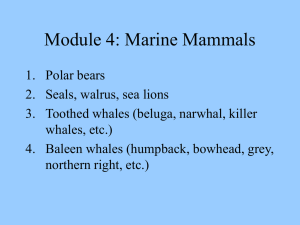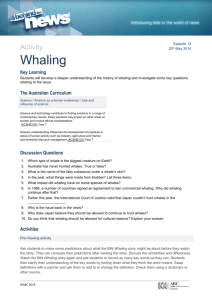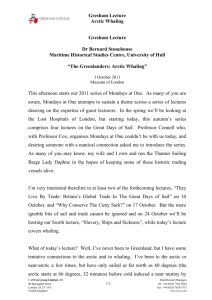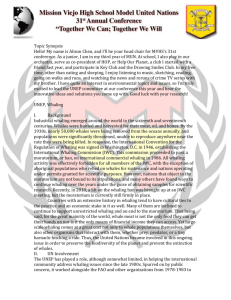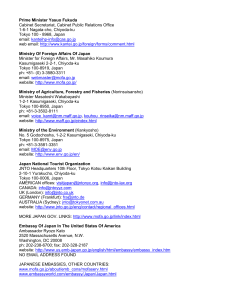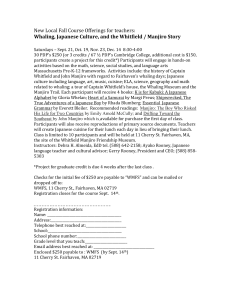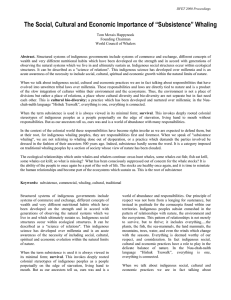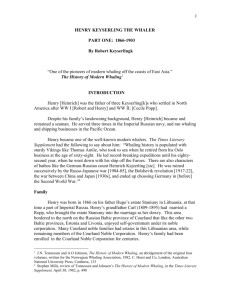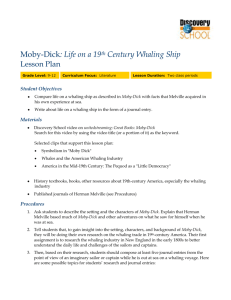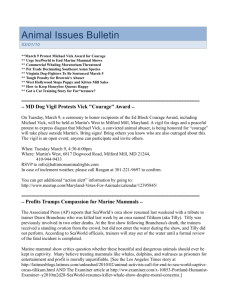1.5 Bv3 (Word 2007, 80 KB)
advertisement
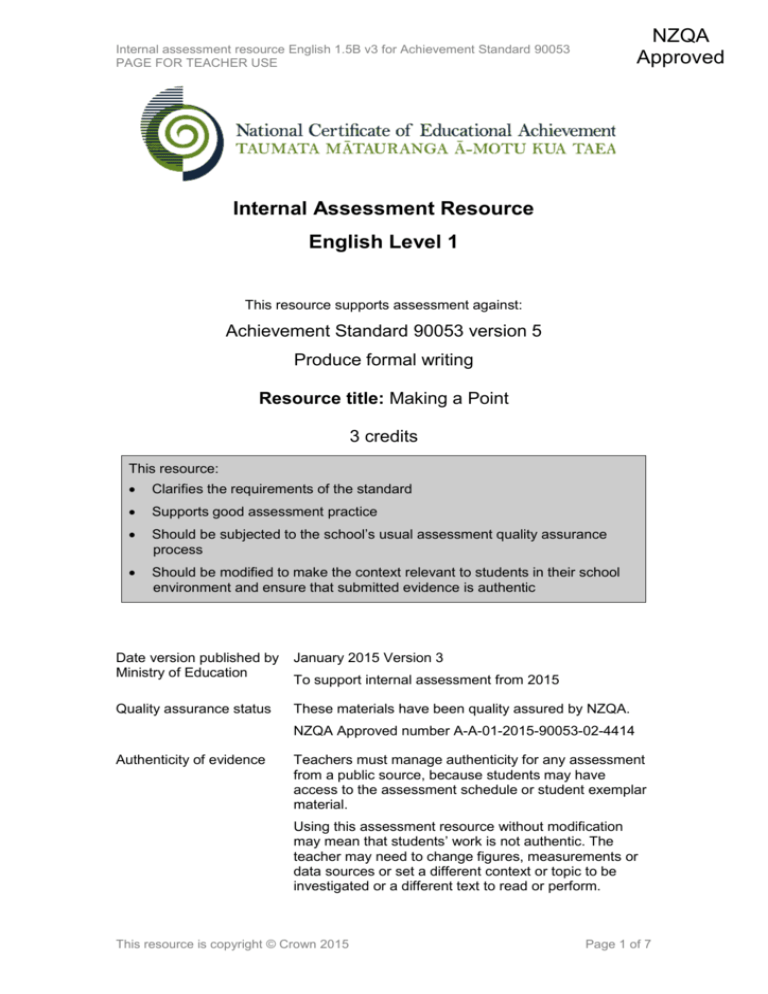
NZQA Approved Internal assessment resource English 1.5B v3 for Achievement Standard 90053 PAGE FOR TEACHER USE Internal Assessment Resource English Level 1 This resource supports assessment against: Achievement Standard 90053 version 5 Produce formal writing Resource title: Making a Point 3 credits This resource: Clarifies the requirements of the standard Supports good assessment practice Should be subjected to the school’s usual assessment quality assurance process Should be modified to make the context relevant to students in their school environment and ensure that submitted evidence is authentic Date version published by Ministry of Education January 2015 Version 3 Quality assurance status These materials have been quality assured by NZQA. To support internal assessment from 2015 NZQA Approved number A-A-01-2015-90053-02-4414 Authenticity of evidence Teachers must manage authenticity for any assessment from a public source, because students may have access to the assessment schedule or student exemplar material. Using this assessment resource without modification may mean that students’ work is not authentic. The teacher may need to change figures, measurements or data sources or set a different context or topic to be investigated or a different text to read or perform. This resource is copyright © Crown 2015 Page 1 of 7 Internal assessment resource English 1.5B v3 for Achievement Standard 90053 PAGE FOR TEACHER USE Internal Assessment Resource Achievement Standard English 90053: Produce formal writing Resource reference: English 1.5B v3 Resource title: Making a Point Credits: 3 Teacher guidelines The following guidelines are designed to ensure that teachers can carry out valid and consistent assessment using this internal assessment resource. Teachers need to be very familiar with the outcome being assessed by Achievement Standard English 90053. The achievement criteria and the explanatory notes contain information, definitions, and requirements that are crucial when interpreting the standard and assessing students against it. Context/setting This activity requires students to produce a piece of formal writing that makes a point. The activity described here is designed as an outline only. You will need to adapt and expand it for particular contexts. Conditions Students will complete the writing task, by hand or using a word processor, at school under teacher supervision. As students develop their drafts, you may offer general guidance, for example, on the need for further work on the ideas, language, or structure, or accuracy in spelling, punctuation, or paragraphing. Additional information The assessment for this standard can be connected to the assessment of other internal standards such as: AS90849 Show understanding of specified aspect(s) of studied written text(s), using supporting evidence; AS90850 Show understanding of specified aspect(s) of studied visual or oral text(s) using supporting evidence; AS90852 Explain significant connection(s) across texts, using supporting evidence; and AS90853 Use information literacy skills to form conclusion(s). Where you integrate different parts of the programme, ensure that the work presented for each assessment is developed sufficiently to meet the criteria for each standard. Refer closely to the relevant standard, including the Explanatory Notes and the Conditions of Assessment Guidelines for that standard. Resource requirements None This resource is copyright © Crown 2015 Page 2 of 7 Internal assessment resource English 1.5B v3 for Achievement Standard 90053 PAGE FOR STUDENT USE Internal Assessment Resource Achievement Standard English 90053: Produce formal writing Resource reference: English 1.5B v3 Resource title: Making a Point Credits: 3 Achievement Achievement with Merit Achievement with Excellence Develop and structure ideas in formal writing. Develop and structure ideas convincingly in formal writing. Develop and structure ideas effectively in formal writing. Use language features appropriate to audience and purpose in formal writing. Use language features appropriate to audience and purpose with control in formal writing. Use language features appropriate to audience and purpose with control to command attention in formal writing. Student instructions Introduction This assessment activity requires you to produce a piece of formal writing that “makes a point”. The context for this could arise from any aspect of the year’s English programme. Some examples are: an opinion or persuasive piece on an issue that has arisen from a text study, class discussion, or a school/local/national/global current event a formal learning log on a school community site (for example, a moodle site) an introduction to an aspect of your culture or background, to be included in a class booklet a report or submission on a school or community issue. Teacher note: The activity described here is designed as an outline only. You will need to adapt and expand it for particular contexts. You will write your opinion piece at school under supervised conditions. You will be assessed on how effectively you develop and structure your ideas and your use of language features that are appropriate for the audience and purpose. Preparatory task Plan and gather evidence. Your plan may take the form of a list, a diagram, or a mind map. In your plan: state the purpose of the writing and your intended audience outline the topic and content of your writing include your main idea, the points or information you will use to expand on this, and the order in which these points will appear in your finished piece. This resource is copyright © Crown 2015 Page 3 of 7 Internal assessment resource English 1.5B v3 for Achievement Standard 90053 PAGE FOR STUDENT USE Add notes to the plan about the supporting evidence for each of your points. Make sure that each point is supported by at least one piece of relevant and specific evidence. Examples of evidence include: quotations from a written text facts derived from research, surveys, or interviews personal opinions or observations. Task Write your piece of formal writing. Add details or examples for each new point or idea in your plan and link that idea to other ideas and details. Make credible points (even if your audience disagrees with you, they need to believe you have a valid point) and ensure that your supporting evidence is relevant to your point. Offer your audience new points of view or ideas. For example, you might compare and evaluate points, or offer solutions to a problem you have discussed in depth. Use language features appropriate to your audience and purpose. For example: use formal language, a variety of appropriate sentence structures, and write fluently, in an objective, controlled style write with flair and/or originality so that your piece commands attention from the audience. Make your personal voice clearly heard through a distinctive personal style, which might include inventive and/or sophisticated use of language and a wide range of word choices. Edit and proof your work. See Resource A. Submit your writing for assessment. This resource is copyright © Crown 2015 Page 4 of 7 Internal assessment resource English 1.5B v3 for Achievement Standard 90053 PAGE FOR STUDENT USE Student resource A: Editing and proofing Editing means that you read your work and make improvements to the tone and style of the piece. For example, you might: strengthen your opening to command attention replace informal words or phrases with words more appropriate for formal writing improve the flow of your sentences vary the way your sentences start improve the links between ideas add links, sub-headings, or keywords add more supporting evidence add explanations to link your evidence to your ideas. Proofing means that you should check your work carefully for errors. Here is a list of some common errors in students’ writing: missing punctuation (for example, full stops, commas, apostrophes, speech marks) missing or misused capital letters incomplete or incorrect sentences incorrect paragraphing misspelt words mixed-up tenses. This resource is copyright © Crown 2015 Page 5 of 7 Internal assessment resource English 1.5B v3 for Achievement Standard 90053 PAGE FOR TEACHER USE Assessment schedule: English 90053 Making a Point Evidence/Judgements for Achievement The student has presented a formal piece of writing, of at least 350 words, that develops and structures ideas using language features appropriate to audience and purpose. Evidence/Judgements for Achievement with Merit Evidence/Judgements for Achievement with Excellence The student has presented a formal piece of writing, of at least 350 words, that develops and structures ideas convincingly using language features appropriate to audience and purpose with control. The student has presented a formal piece of writing, of at least 350 words, that develops and structures ideas effectively using language features appropriate to audience and purpose to command attention. In the excerpt the student has: In the excerpt the student has: introduced the topic (money and happiness) and the writer’s position (Money can't buy happiness). introduced the topic (whaling) and the writer’s position (whaling is wrong and needs to be stopped). built on an idea/s using facts, information, opinions, observations, arguments: As it is said and heard over and over again throughout the years, many people believe that money can't buy happiness. Sometimes parents tend to stress the thought that money can't buy happiness and that we should be grateful for what we have. I believe that people deserve and will receive what they work hard for, and money can buy happiness…. ……….For the most part, my family and I are the average family that many others can relate to. My mother is a nurse and my father is a business man. Linked, organised and structured ideas so they are generally credible and connected: my mother is always worried about payments, constantly! She worries about electricity bills, house payments and car payments, groceries, and of course other casualties that may come built on ideas so the argument is compelling: Japanese whaling that is destroying the whale population, using unnecessary resource. The argument is developed through the effective use of opinions: Whale watching is really popular in NZ. This could be because people know that whaling is reducing their numbers and endangering many species; questions: So why do we need to use whale parts to make things that we could use from other material, that isn't endangered?; facts and statistics: Tests have shown that humpback whales could have numbered 1.5 million prior to whaling….. Blue whales are less than one percent of their original numbers… The West Pacific grey whale is the most endangered in the world with just over 100 remaining. linked and structured ideas sequentially and effectively. The argument is introduced: Japanese whaling that is destroying the whale In the excerpt the student has: introduced the topic (poverty) and the writer’s position (it is everyone’s responsibility). built on an idea: organisations stepping in like UNICEF and world vision to help ease the problems of poverty; by adding quotations, details, examples and information: they are organisations that rely on donations from the public to send overseas and help the starving children in Africa, Ethiopia and India; personal viewpoint: The government is also not being active enough to help the people in need. The idea of countries taking responsibility for their own poverty is developed by adding details and examples: Mumbai in India has a huge successful economy but there are still millions of people living in slums…. and linking that idea to other ideas and details: In the movie "Slumdog Millionaire" we are shown what the slums are really like. linked and organised idea/s so that the piece works towards a coherent planned whole. The student structures ideas sequentially: the first paragraph develops the emotive use of media on the audience: Often when you turn your TV This resource is copyright © Crown 2015 Page 6 of 7 Internal assessment resource English 1.5B v3 for Achievement Standard 90053 PAGE FOR TEACHER USE on around a meal time you will see an ad for such organizations wanting you to donate money for them to send to countries in need; the second paragraph develops government responsibility for the people in countries where they have slums: They don't have things like the benefit where people who don't or can't work still have some kind of income however minimal to keep them on their feet. This is paid for by the tax payers. up during the week…. … ……She often asks me to get a job and pay for things myself…. ………Mothers who can’t afford to buy healthy fruit and vegetables or medicine for their children….. used language features appropriate to audience, purpose and selected text type, such as: vocabulary selection, syntax, stylistic features, and written text conventions. For example: If they enforced this system in India there would be a lot less problems with poverty….….. ….. It gives you the chills to see these people living in these horrible conditions… used written text conventions without intrusive error patterns, such as a pattern of errors in syntax (e.g. sentence fragments, where structures are not used intentionally; and ‘run on’ syntax) or a pattern of other significant errors (e.g. mixed tense sequences, miscapitalisation, spelling errors). selected and used language features with control as appropriate to the intended audience and purpose. For example: From my point of view, people who are economically advanced and don't have to consider money to be a struggling factor in their lives can't truly understand where those of us who aren't so well advanced are coming from… …………. What I am saying, is that if my mother or family were to receive a million dollars spontaneously at this moment, would they be happier? The answer is yes, absolutely they would. It would eliminate many stresses that not having plentiful amounts of money can cause. For example bills, children, or even the occasional Saturdays where you want to go out for a nice dinner with your family. population, the next paragraph discusses the potential extinction of the species: This clearly shows that whales are on the brink of extinction and something needs to be done; alternatives are suggested: So why do we need to use whale parts to make things that we could use from other material, that isn't endangered?..... There are plenty of other ways to produce these products that do not waste precious resources…. and protest action is evaluated: So, what about those who are doing something to stop Japanese whaling? The ideas are drawn together in the conclusion, reinforcing the argument to ban whaling: Whaling should be banned because it is wrong to do for any reasons. It is time to enforce a total ban on whaling and save our whale. selected and used language in an original manner, or in a distinctive personal voice, dimension or viewpoint as appropriate to the audience and purpose. For example: To most, standing on a boat, sun shining on your face, water splashing everywhere and wind blowing through your hair, this would seem like a good day. Unfortunately for this group of people the sea is not blue like normal, but is red instead. Painted red by the Japanese whaling (opening paragraph). used text conventions accurately so that the writing contains only minor errors. used written text conventions accurately so that the writing contains only minor errors. Final grades will be decided using professional judgement based on a holistic examination of the evidence provided against the criteria in the Achievement Standard. This resource is copyright © Crown 2015 Page 7 of 7


